Japan’s toddler superstar: the baby bringing hope to a ghost village
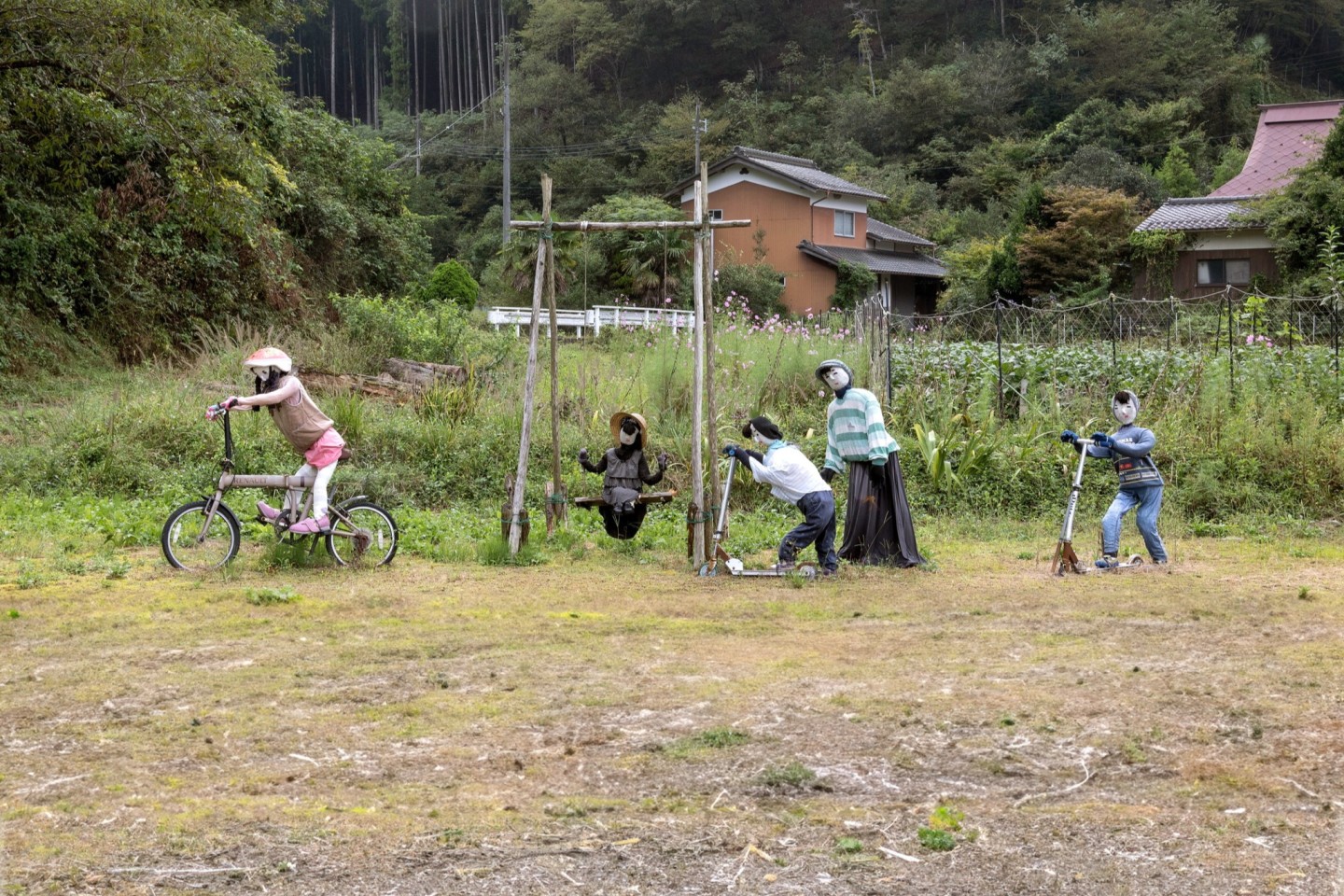
Simply sign up to the Life & Arts myFT Digest -- delivered directly to your inbox.
In the playground on the western edge of Ichinono, a mother watches fussily over a group of children as steel-grey clouds pause between autumn downpours. Two children are on scooters. One is on a wooden swing. A fourth is pedalling off towards the woods on a pink bicycle.
None of them are actually real.
The rain begins again and the five figures — along with the dozens of other life-size stuffed dolls positioned around Ichinono and conceived to populate a depopulating village — remain rooted to their spots.
The roughly 60 dolls, which locals began crafting a few years ago to fill a psychological gap as people depart either vertically or horizontally, now outnumber the 53 flesh-and-blood residents of this dying village north of Osaka. Some are poised in farm activities. Others are in exercise, play or mid-conversation. Most simply lean or loom, their cloth eyes staring fixedly into space as the world takes its indifferent detour around Ichinono.
A garden gate clanks shut somewhere up the road. A pump bubbles water into a pondful of carp. Otherwise, the village is silent.
But as evening darkness envelops Ichinono’s small cluster of houses and working fields, and two of the residents return home for the night, another sound breaks the silence: a sound that has been unheard this side of the new millennium. In a partly renovated single-storey house in the middle of the village, a baby is wailing.
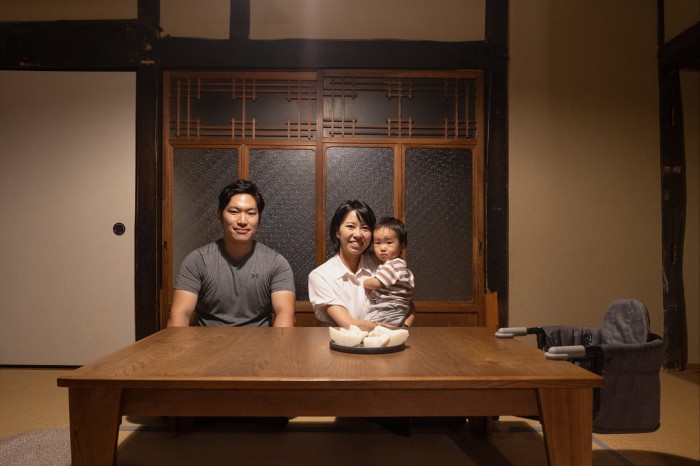
It does not last long. Kuranosuke is the first child born in Ichinono for more than two decades. He is its youngest resident by many years and, as he tucks into rice and sweet potato, the definition of contentment.
On earth for a little over a year and cherished by a cooing, tribute-bearing platoon of surrogate grandparents from around the village, the boy has already had poems written about him. When he appears to his elderly local fans, he is the centre of attention and the target of collective parenting muscles, unflexed in some cases for over half a century. A haiku — “running around the village/ the patter of tiny feet/ gusts young leaves” — has been inscribed on a votive wooden plaque by the wife of the village chief and sits at the entrance of the family home.
The boy gurgles back to his dinner, a hero for simply existing.
To some, this scene — exceptional, even in Japan — might look dystopian. Or at the very least, an extreme version of the destination that permanently low birth rates — of a type now established across significant parts of Asia and Europe — can take a country when not offset with immigration. Countries such as China, whose population has now begun to contract, can see that Japan may now be providing lessons on what this process will look like in decades to come.
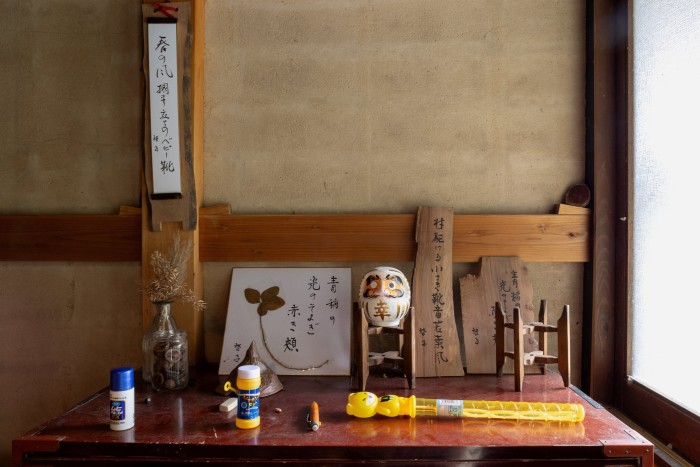
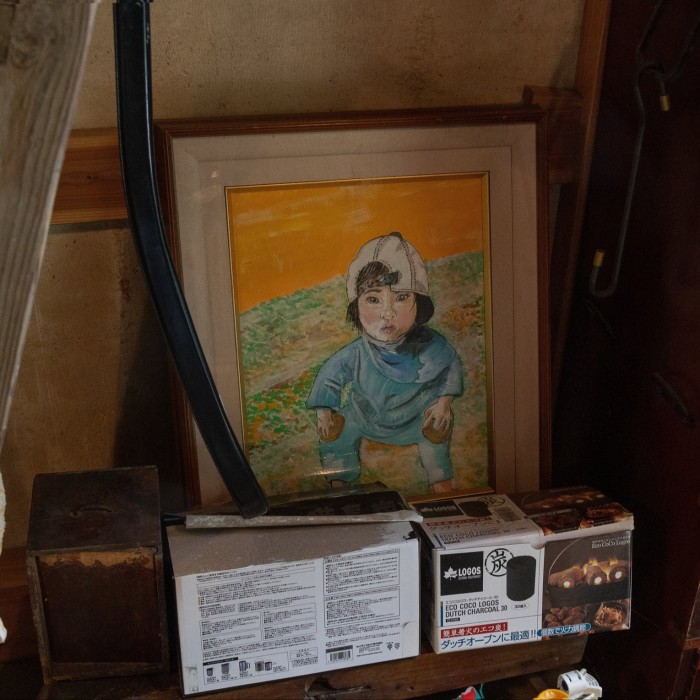
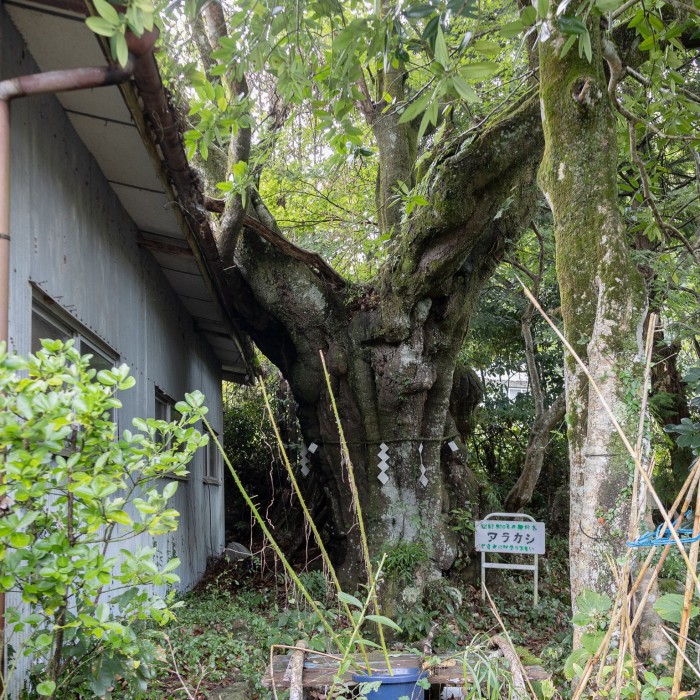
The media, and with it the political debate, has tended to opt for the negative interpretation of birth-rate data and stories. In January, prime minister Fumio Kishida declared what appeared to be a line in the sand on years of halfhearted or ill-construed birth-rate policies. The government’s attention could no longer be distracted from this issue because, as he put it: “Japan is standing on the brink of whether we can continue to function as a society.”
But to the Kato family, Ichinono is utopia. Kuranosuke Kato and his early-thirties parents, Toshiki and Rie, have opted to live in apparent defiance of Japan’s consumerist, atomising and urbanising statistical trends. The birth/death balance in the country means that its indigenous population is now shrinking at a rate of around one person every minute; the population of Ichinono, where the Kato family moved three years ago just as the pandemic was beginning, declined by three in 2022 alone.
Almost 32 per cent of Japanese men and 24 per cent of women have never been married. Ever fewer young Japanese are tying the knot and the annual number of marriages — still overwhelmingly a Japanese social prerequisite for producing children — is half what it was in the 1970s. Last year, fewer than 800,000 babies were born in Japan and the indigenous population shrank by over half a million.
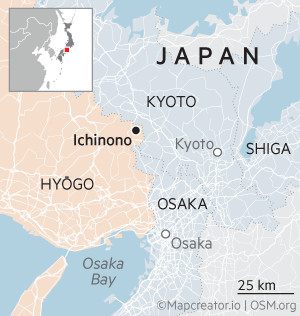
The Kato couple, meanwhile, left the city, married and are wondering about a brother or sister to keep their son company. Toshiki works from home as a consultant to IT companies. Rie, a midwife at a hospital to which she commutes by car every day, is in the baby business, and her husband seems to enjoy the irony.
“I like the countryside. We can find an identity in the countryside. In the city there are a lot of rules, but this is more loose,” says Toshiki, who discovered Ichinono by accident while on a work trip a few years ago. “I still don’t know if moving here was a good idea or not, but it feels like the human thing to do. My wife is more stress-free and my son can lead a natural life. Being in the countryside is about mental security. We’re less anxious about raising children.”
Still, their choice of idyll is odd. For some decades now the village, crouched in the hills of Hyōgo prefecture and with a sacred 500-year-old oak tree at its centre, was indisputably on a demographic course to zero. It feels perfectly possible that, if the family stays here, Kuranosuke could reach adulthood in a village where he and his parents are more or less completely alone. In common with the rest of Japan, where 10 per cent of the population is now over the age of 80 and 29 per cent is over 65, Ichinono is old. Most of its 53 residents are well past retirement age, and some a good way beyond that.
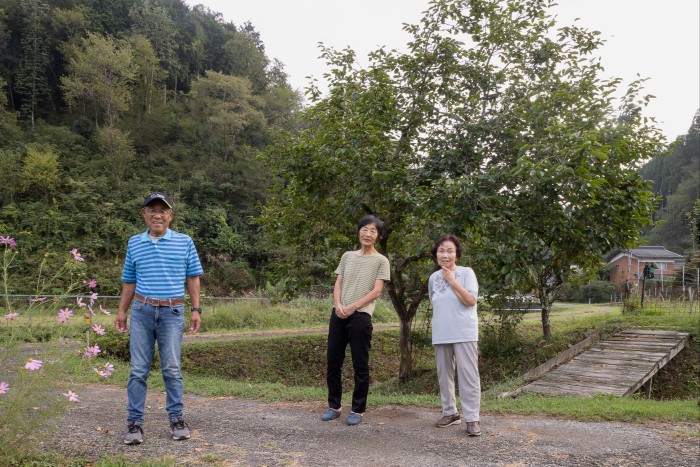
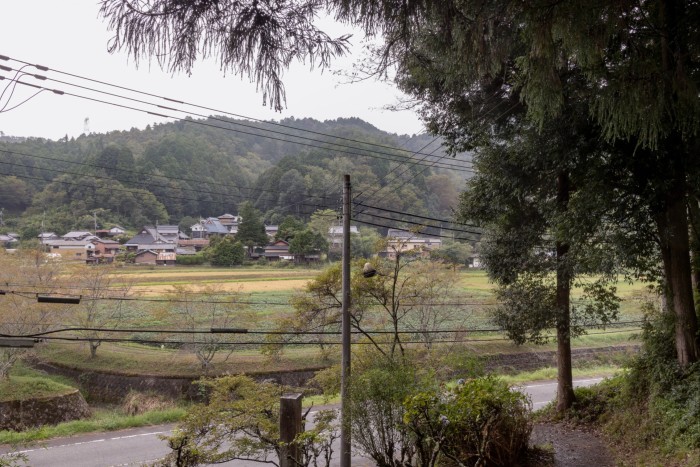
“I suppose that gradually we got used to the idea that the village would just disappear, and one day we would all be gone. No new people would come here. Anyone young would not be able to find anyone to marry locally and leave. It would just vanish,” says Taeko Murayama, a farmer whose memories of growing up in Ichinono include playing with her grandmother in a house that now stands, just a few metres from her, in abandoned ruin.
Taeko’s rice-farmer husband Shinichi sees Japan’s diminishing demographics reflected in the village’s changing relationship with nature. When he was a young man, and the village had a far larger and more energetic population, Ichinono lived in harmony with the wooded mountainside around it. The villagers would fell trees but also replant and prune. Delicious — and valuable — matsutake mushrooms would grow copiously in this environment. Now, with the forest untended, the mushrooms are gone.
Half of the houses in Ichinono, by local estimates, now lie empty, their residents either dead or moved to care homes elsewhere. They are part of a national stock, according to a 2018 estimate, of 8.5mn such akiya in Japan, whose numbers are on course to swell to 20mn over the next two decades. The small rice paddies and vegetable farms on which the village lives are productive but raggedy. Electric fences surround many of the plots because Ichinono’s shrinking population no longer produces the sort of bustle and activity that once convinced bears, deer, monkeys and boars to confine themselves to the nearby hills.
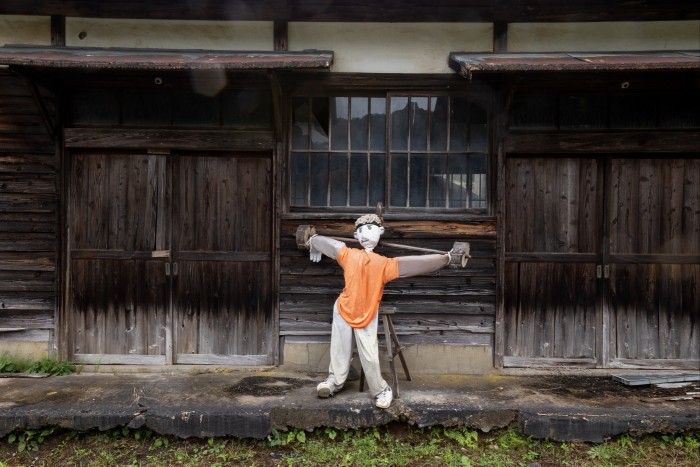
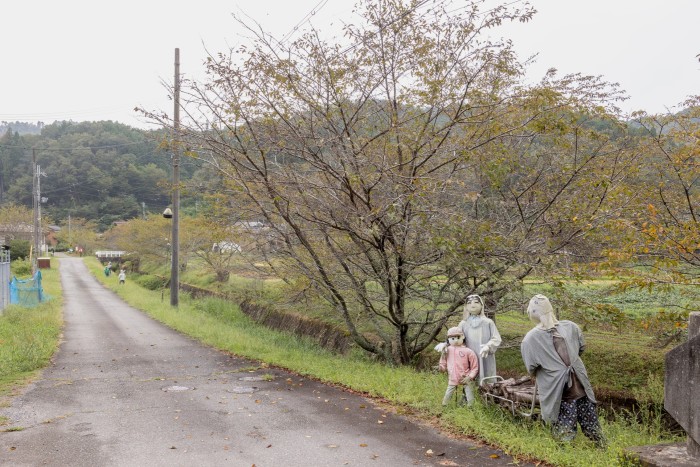
One very striking factor in all this is how unisolated the village is. It is not remotely remote, easily reachable by large, well-maintained roads. It needs them — there are four high-grade golf courses within a 3km radius of Ichinono’s abandoned farmhouses that attract respectable traffic. It is just 32km from Kyoto and 63km from the centre of what is generally considered Japan’s second-biggest city, Osaka. A bullet train station that could take you to Tokyo every 15 minutes is less than 30 minutes’ drive away.
The temptation is to see villages like Ichinono as the vanguard of Kishida’s feared rumble into dysfunction. Toshiki, who chuckles at the fact that villagers like to leave pumpkins and other vegetables on the doorstep for Kuranosuke, would not agree. At its best, he says, Japanese culture is actually the culture of the village.
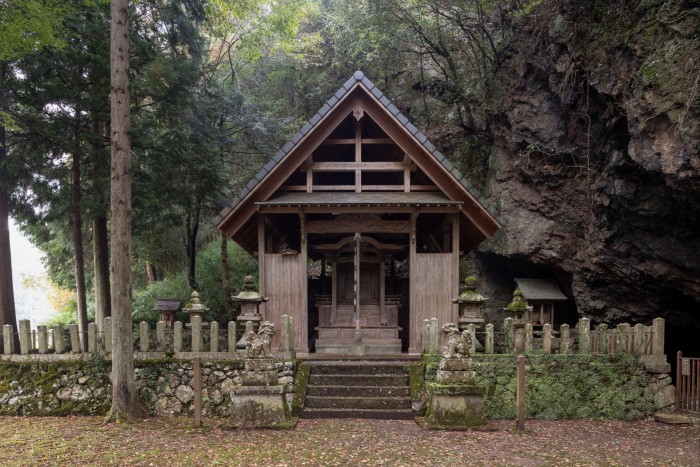
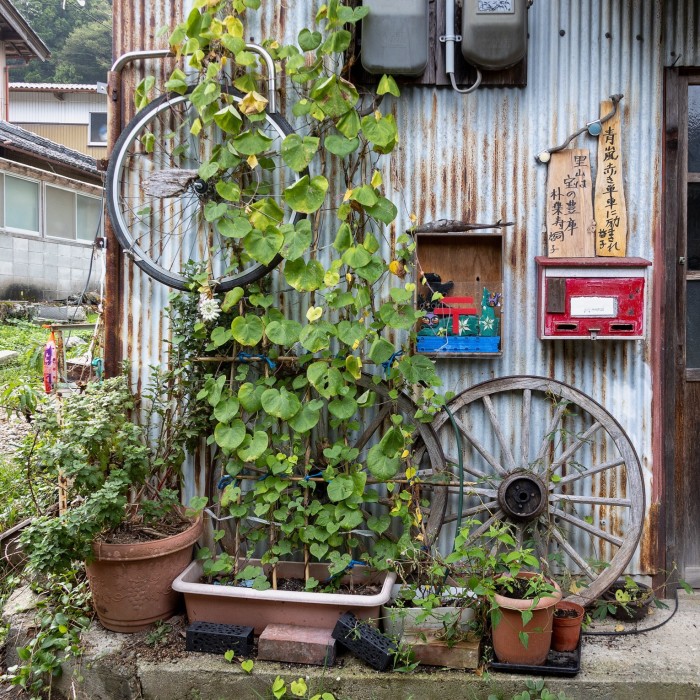
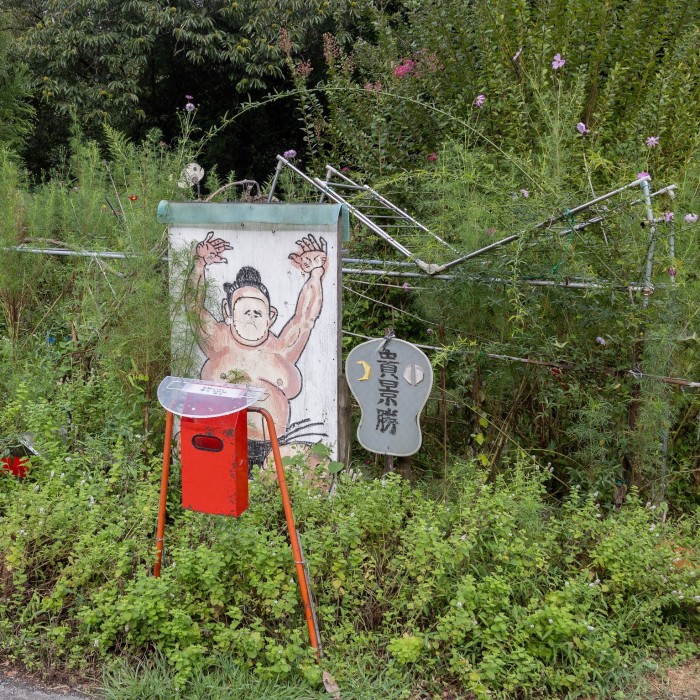
“It is a culture of mutual support. When my thatched roof collapses, everyone helps rebuild it. Everyone owns the village, and when a child comes along, everyone raises it together,” he says. “That doesn’t happen in cities.”
It remains very unlikely, however, that the Kato experiment with a return to the countryside will be widely replicated, and few truly believe that Japan’s demographic tide can be turned. Optimists might see the Kato family as part of a successful experiment in the economics of “degrowth”. Others will decide their cheerful trend-breaking is the exception that proves a far more depressing rule among young Japanese.
Japan’s stagnant “lost decades” of the 1990s and 2000s, while relatively comfortable for millions of Japanese and even enviable to other countries around the world, have left an indelibly negative mark. There is still a deep sense of precariousness around work, while the competitive pressures that hound parents and students into heavy expenditure on extra schooling have not abated.
The long years of wage stagnation are often blamed for permanently tranquillising Japan’s animal spirits. But also clear is that Kuranosuke has been born into an epoch when decades of accumulated demographic torque — the super-ageing of society and shrinkage of the successive generations — are unwinding some of the great certainties that have made Japan what it is today.
Those include, for some, the certainty that growth — both in economics and demographics — is the only valid course. Other unravellings are less up for debate. A postwar Japanese political establishment built around the courting and appeasement of farmers and the baby-boom generation must substantively reimagine its priorities. A massive corporate sector once shaped around an abundance of legally unsackable labour must retool and restructure for its opposite. The once notoriously overworked workforce, now shrinking and in hotter demand, is gaining the power to quit and question.
The great upheaval, overwhelmingly created by demographics, may even now be greater than Japan has yet admitted to itself. To certain parts of the financial industry, there is a good deal to celebrate in this.
In a note to clients published last week by the brokerage CLSA under the title “Japan’s perfect demographics”, the equity strategist Nicholas Smith argued that investors may see a range of benefits in a set of circumstances that have conventionally been painted as wholly negative. While the employment-threatening advent of automation and artificial intelligence may be a millstone to countries with a large population, they are a boon to a shrinking one. Wage increases — their long absence once seen as a heavy padlock on wider economic revitalisation — are far more likely as labour becomes more scarce.
Still, the sense of an unstoppable, slow-motion disaster — where an ever-diminishing young population is forced to support an ever-swelling elderly one, remains the predominant take. And it is no less unsettling for how well everyone knows this. Japan has seen its demographic crisis coming for a long time.
Japan’s immigration debate, despite the now steady influx of foreign workers coming in as part of national policy, remains prickly and widely avoided. It is likely to be so, say political analysts, even if the public narrative finds an acceptable terminology with which to bring the debate more fully into the mainstream conversation. In 2019, Japan introduced a visa programme that in effect opened the country to tens of thousands of blue-collar workers from overseas. Three years later, the government produced a road map to implement “harmonious coexistence” with a new immigrant population. All very practical, but none of it able to dislodge the idea that the government, first and foremost, has a responsibility to raise the indigenous birth rate.
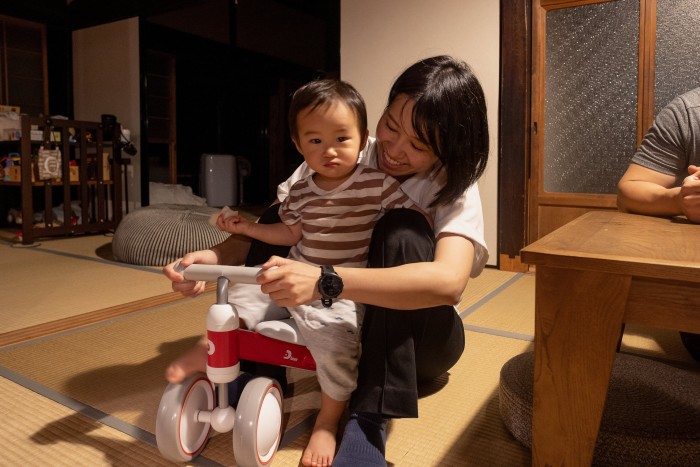
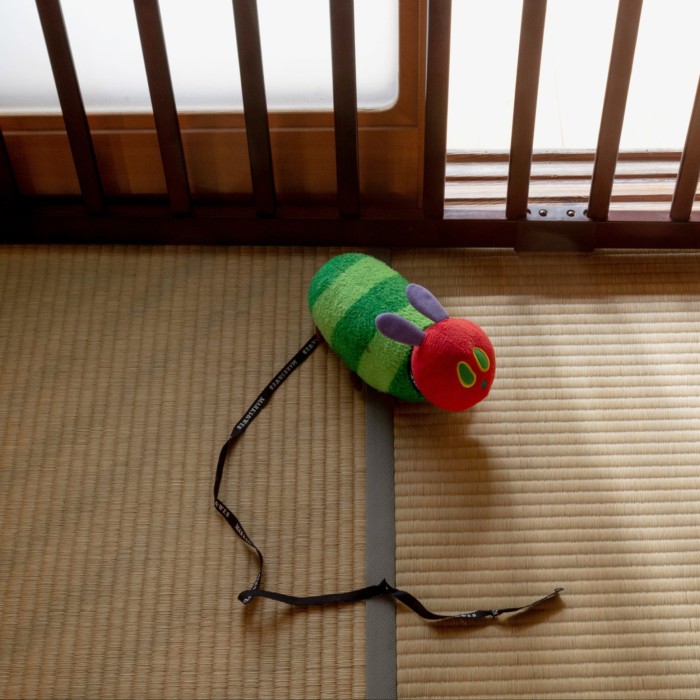
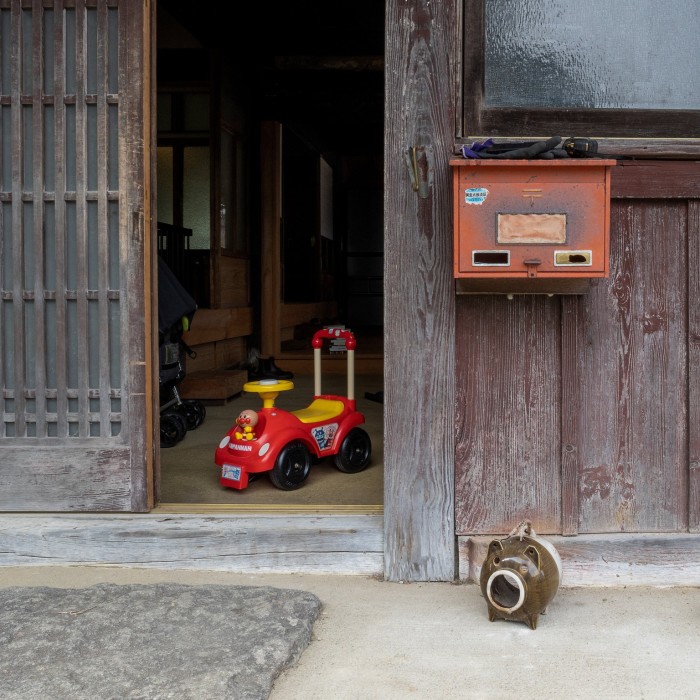
That idea of government responsibility for an intensely personal decision is deeply entrenched. Back in 1990, Japanese media swooned at the “1.57 shokku” or shock, the point where the fertility rate — births per woman of childbearing age — had fallen decisively below replacement levels, and a moment of national recognition that coincided with the collapse of the late-1980s asset bubble. (The particular significance of that figure derived from the rate having been 1.58 in 1966, a deeply ill-omened year when many families avoided having children.) For all Japan’s wealth, ingenuity and stability, it appeared not to be a country where people wanted to form households.
Those fears felt more real every year that the new fertility numbers were published. Since the 1.57 shokku, the fertility rate has declined to an all-time low of 1.26 in 2005, risen slightly from there and since declined again to 1.26 in 2022. It is nowhere close to reversing population decline, but is now higher than fertility rates in China, Taiwan, South Korea and Singapore. This comparison may not immunise the authorities in Tokyo from the political need to “solve” the birth-rate issue, but it may help shake off the unhelpful myth that the causes are unique to Japan.
The biggest issue, says Junya Tsutsui, an expert on demographics at Ritsumeikan university, is that successive government policies on the birth rate have skewed towards the wrong part of the problem. While many measures have been tried over the years, the majority are designed to address fears that having large numbers of children is simply too expensive for young Japanese to contemplate.
Yet the declining birth rate, he says, can mostly be explained by the fact that the unmarried population is rising, and people are marrying later in life. “The amount of child-rearing support on offer has little to do with this. The birth rate isn’t actually that much declined among people who do get married. Japan needs to increase the marriage rate.”
The problem then shifts to the question of why more Japanese are not marrying, and what, realistically, any government can do about this. Again, says Tsutsui, the “lost decades” have a lot to answer for. Of all the surveys carried out around the birth-rate issue, he says, the significant one relates to income and marriage prospects. Among men with an annual income of ¥5mn or more, he tells me, about half will get married within a few years. For men with an income of less than ¥2mn, that ratio drops to 10 per cent. The more precarious the employment market, the lower the prospects of marriage and, consequently, children.
Therefore, Tsutsui says, Japan has grounds for optimism. The country’s once seemingly hostile demographics are, in theory, turning friendly. The tighter the labour market, and the more directly that translates into wage increases, the more marriageable its young people become.
The Kato family, sitting at a low table on a tatami floor, watch patiently as the village superstar finishes his dinner and eyes a small sit-on car in the corner that begs to be ridden around the room before bedtime. His mother Rie wipes his chin and gestures out at Ichinono — its roads in near-complete darkness and the silence, once again, its defining feature.
“It is peaceful here,” she says, “but Kuranosuke needs friends his own age.”
Leo Lewis is the FT’s Asia business editor
Find out about our latest stories first — follow @ftweekend
Letters in response to this article:
What one child’s birth means for Japanese society / From Troy Snowden, Wakefield, West Yorkshire, UK
I’ll give full marks to Google Maps for effort / From Shamir Shah, Singapore
Comments